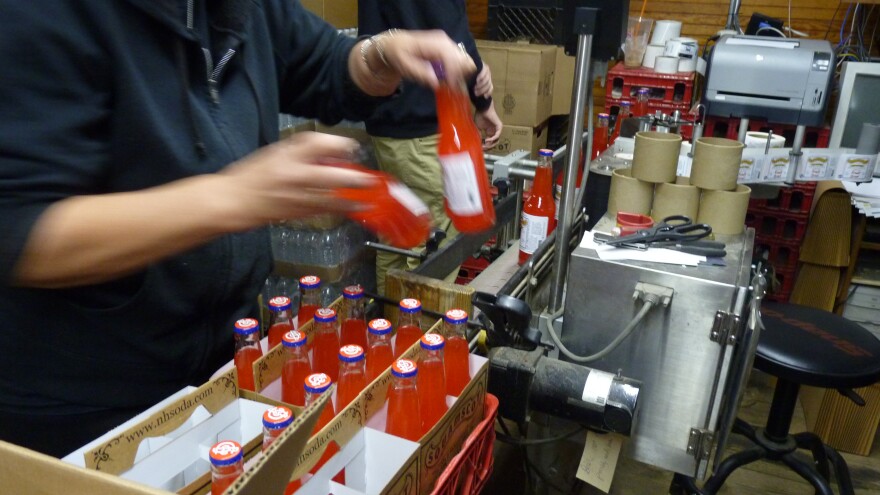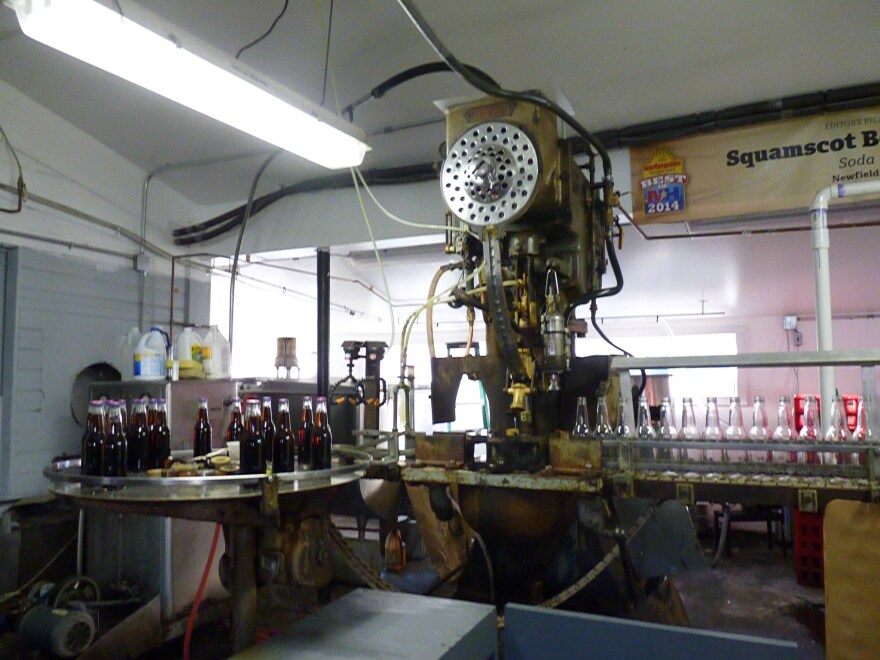The machinery inside Conner Bottling Works doesn’t sparkle like it used to. In fact, everything and everybody in here look like they could use a break.
“We are the last family-owned independent bottler in the state of New Hampshire,” says Dan Conner, the fifth generation to work here. “153 years, from start to today. Never shut down, never stopped.”
Launched in 1863, the first Conners only bottled beer, but in the 1890s, the company branched out into sodas. During prohibition, harder drinks were made out back, a friendly sheriff reportedly looking the other way.
And then in 1938, they laid out $2,400 for the Dixie, a new bottling machine manufactured in Baltimore that has more than earned its keep.
“They put it in here brand new,” says Tom Howcroft, the only non-Conner working inside the factory. “It’s been in this spot ever since, working just about every day.”
Watching soda get made is more pleasant than watching, say, sausage. Howcroft lines up the gleaming glass bottles, with each one rattling along toward the spigots. He knows it’s a scene right out of a sitcom.

“Laverne & Shirley, the one that a lot of people bring up, with the conveyor belt,” says Howcroft.
The gleaming bottles move down the line, first passing under the syruper that deposits two ounces of cane sugar and flavoring. Then, a stream of carbonated water, followed by the cap.
“Which happens with a big clang.”
The bottles then get a quick rinse from a tiny sprinkler. After they dry, a label, and then, finally, a taste test.
“It doesn’t taste anything like Coke, doesn’t taste anything like Pepsi,” says Howcroft. “Like a traditional cola.”
Traditions rolls deep here at Conner, and that’s thanks in part to the current owner, Tom, who started working here “when I was old enough to walk across the driveway from the house there. You didn’t have a choice back then.”
Child labor rules have changed, and so have the economics of soda making. For starters, there’s not much local competition.
“At one time there were 60 bottlers in New Hampshire,” says Tom Conner. “And we just happen to be the only ones left.”
That ability to hang on has started paying off. Their line of sodas, sold under the name Squamscot Beverages, are now carried in more than 600 stores around the country.
Customers have 27 different flavors to choose from. Root beer and cherry cola, fruit bowl, ginger ale. Even some low-calorie options, much to Tom’s chagrin.
“I don’t care for it. I know people like it. Some people have to drink it, and we make it. And let it go at that,” he says.

This time of year, the biggest demand is for Squamscot’s limited edition Mistletoe Mist, only available for about a month, unless it runs out sooner. It’s a family recipe Tom isn’t about to reveal.
“My parents used to take a mixture of different flavors, and they’d pour it into a punchbowl, whenever they had holiday parties. And then we thought we’d just pour it into the bottle, cap it, and call it something good,” he says.
Mistletoe Mist is a pinkish color, citrusy, not really all that seasonal. But like a good punch, it goes well with whatever else is kicking around.
“Well, rum is good with it, vodka is good with it. But you can put anything you want in it,” he says.
Everything in moderation, he cautions, though he ignores any concerns that too much soda is bad for your teeth.
His smile reveals a mouth full of pearly whites, all his own.
“Well, most of them. You know, a couple broke off, had them fixed. But [my son], 40 years old, never had a cavity,” says Tom. “So tell a dentist that.”
After showing off his grin, his warehouse and the delivery truck, there’s one last item to see on the Conner Family property.
“We can walk out back and see the solar system.”
Tom’s not talking about the celestial bodies that twinkle down upon his soda operation. Instead, it’s the 156 solar panels that power the entire factory. They’re big on tradition here at Squamscot, but are happy to update things if it makes financial sense.










